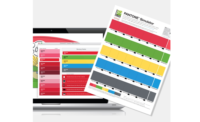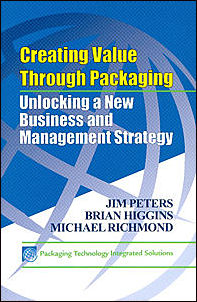Ensuring Exact Brand Colors with Color Management
Patrice Aurenty is the business leader for Color Management at Sun Chemical. He has offered Sun Chemical 17 years of experience.

 Q: Mainly, who is in charge of color management when printing flexible packaging?
Q: Mainly, who is in charge of color management when printing flexible packaging?
A: A combination of the converter and the contracted prepress provider for the same client product packaging being printed are responsible for color management. The main focus is typically for CMYK process color management, as here there will be four common inks being printed across all work. Many converters are driving their presses towards an industry standard common CMYK color space such as ISO 12647. This has been picked up in litho first, but has extended into flexible packaging. Ink manufacturers have aligned to the standard by ensuring that ink color conforms to the latest ISO 2846, and they can assist the printer in setting up ISO 12647.
Q: What can be improved upon when a flexible packaging printer is looking for better color management?
A: The vast number of spot colors and unpredictability of what spot colors will be requested frequently cause converters to tackle spot color management on a job by job basis. This ultimately leads to variation error as each printer develops their 'own' version of a spot color, causing alarming variation for branded packaging when it is ultimately brought together at the point of sale. For major brands, obtaining this brand color harmonization across all the product packaging through a consistent color standard for each specific application and substrate needs, is key to meeting the objectives being set for the brand at the outset.
Q: How difficult is it to match colors when printing many batches of the same package or label?
A: The difficulty is based on tolerances that are achievable within the process. For example, ink on carton board varies much more than SBS board from batch to batch. There always needs to be final quality control adjustments. Naturally, if we can reduce these variations, improvements can be delivered. Implementing a color quality control process toolset, such as IQC from Xrite with PantoneLIVE, will provide the precise color standard measurement for press approval, removing accumulated color drift error.
Q: What kinds of trends/technologies is the color management sector seeing?
A: The market is continually looking to reduce costs through improved efficiencies. The traditional spot color matching process can be streamlined by using the exact achievable color targets being set at the earliest stage possible. If everyone worked from a standardized and digitized Pantone palette, matched ‘blind’ to the numbers by the ink manufacturer, as opposed to each converter having their own versions to work toward, the industry can deliver more consistent color and remove duplication.
Q: What are your customers requesting in terms of products or service?
A: Our customers want the right color, the first time, every time and anywhere at the most economic delivered price possible. The converter market is raising its game to retain customers. New print markets can win through lower operational costs, so the mature print market need to respond in other ways, leveraging their experience and expertise to deliver value in new ways for clients. Some of these approaches include the transition to working to CMYK only or to variant expanded color gamut process printing, where converters can target savings in press set up and ganging jobs to reduce the overall required number of print runs.
(708) 236-3798
Looking for a reprint of this article?
From high-res PDFs to custom plaques, order your copy today!







